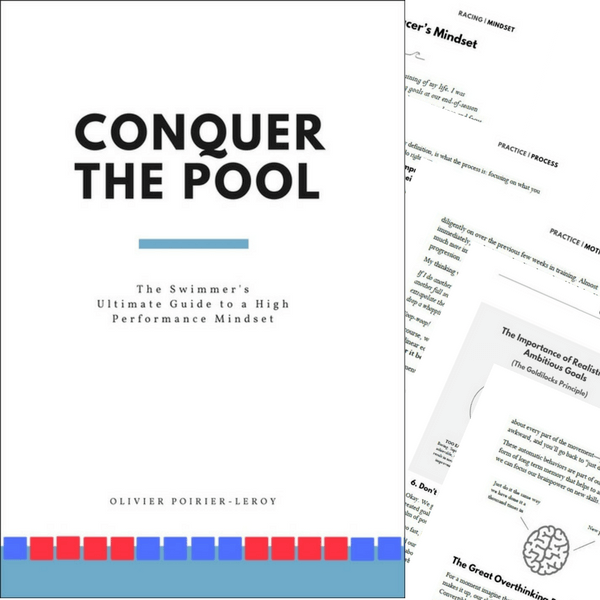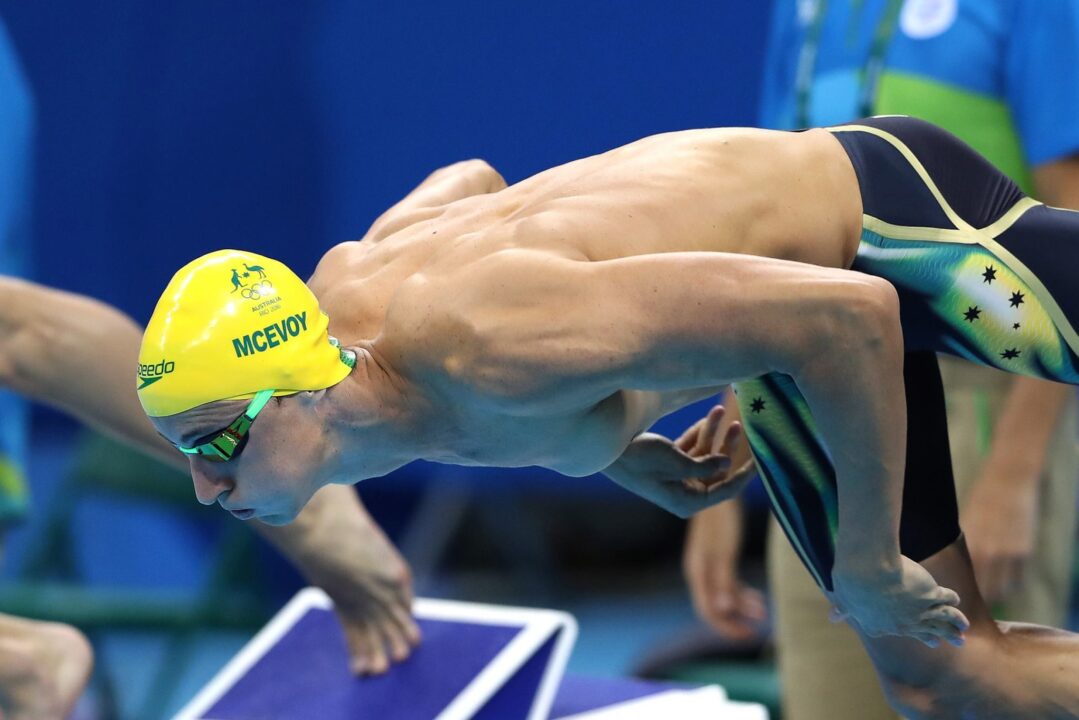Ready to take your swimming to the next level? Here’s a look at the benefits of core training for swimmers.
When it comes to swimming fast, a strong and well-conditioned core can make a huge difference in your swim training and performance on race day.
The benefits of core training for swimmers include increased swim speed, more power, improved technique and body position, reduced risk of injury, and more.
While most swimmers (and swim coaches) intuitively know the importance of core training, the benefits of a stronger core in the water aren’t always obvious.
Which is why core training perhaps doesn’t always get the attention it deserves.
In this guide, we will look at the full list of benefits of core training for faster swimming.
Let’s dive right in.
Advantages of Core Training for Swimmers
The main benefits of core training for swimmers include:
- Faster swimming speed
- Increased power
- Better technique
- Reduced risk of injury
- Tighter streamlines
- Faster starts
- Faster turns
Next, we’ll delve into each benefit, using research and some good old-fashioned common sense to demonstrate the significant impact of core training on swimmers’ performance in the water.
By the end, you will be more motivated than ever to add a structured core training program to your swim routine.
1. Faster swimming speed.
The primary benefit of core training for swimmers is that it will help them swim faster. Ultimately, that’s what every swimmer wants most when they dive into the water and race up and down the black line.
Multiple studies with intermediate and advanced competitive swimmers have shown core training interventions to positively correlate with increased swimming speed.
See also: 6 Swim Workouts for a Stronger Core
One study (Karpinski et al., 2020) took a group of elite swimmers and had them perform a thrice-weekly core training intervention. After 12 weeks, the core group outpaced the control group by 0.3s in a 50m time trial.
Another study (Khiyami et al., 2022) found that a 6-week core training program with age group swimmers increased 50-meter time trial performance by 1.4 seconds compared to the control group.
Swimmers are always on the prowl for ways to get faster in the water.
From devouring hours of swim technique videos on YouTube to testing out the best swim goggles to figuring out which tech suit will help them swim fastest.
Perhaps nothing is as straightforward and simple for improving speed as developing a stronger core.
2. Increased power.
Strong core muscles aren’t just for washboard abs (though that is a nice side benefit!).
A benefit of implementing core exercises for swimming into your training is that a stronger core allows you to radiate power through the limbs.
The core is the platform where the body generates power to generate a stronger pull and kick.
Without a strong core to act as a control center and foundation, it’s difficult to exert energy and power to your arms, chest, back, and legs while swimming.
3. Better technique.
Watch a swimmer with an untrained or unengaged core, and almost inevitably, you will see fishtailing of the hips, over-rotation of the hips and/or shoulders, arms crossing over, improper hand entry, and a litany of other swim technique errors.
See also: How to Improve Freestyle Hand Entry
A stronger core helps swimmers execute proper stroke mechanics and use efficient body position.
The core balances the body in the pool, preventing unnecessary wobbling or side-to-side movements.
This stability helps you to swim in a straighter line and reduce over-rotation errors in swimming technique.
4. Reduced risk of injury.
A benefit of core training for swimmers is improved posture in (and out of) the water, increased body control, and improved joint stability, reducing the risk of injury when swimming.
In a study published in the American Journal of Sports Medicine, researchers surveyed 1,262 swimmers competing for USA Swimming clubs.
Shoulder pain was prevalent among all age levels, with 10% of age groupers experiencing “interfering” shoulder pain at the time of the survey. These figures increased to a whopping 26% for national team members.
See also: How to Finally Fix and Prevent Swimmer’s Shoulder
While a stronger core isn’t a cure-all for swimmer’s shoulder, it can help address many root causes, including muscle imbalances and poor posture.
Swimmers, like most people, often have terrible posture, leading to shoulders that roll forward, increasing the risk of impingement, particularly when performing overhead movements like swimming.
Core exercises help to “stiffen” the spine and pull the shoulder joints back into the capsules, promoting better posture, which can lead to reduced injury from swim training.
5. Tighter streamlines
From our earliest days in the pool, we are told about the importance of streamlining in swimming.
We lower drag and resistance by positioning ourselves in a streamlined position, whether diving into the water or pushing off, reducing velocity erosion.
A benefit of core training for swimmers is strengthened lumbar support, generating a “rigid” spine in the water, which results in a more streamlined and efficient body position.
A strong core also helps swimmers maintain a streamline when pushing off when fatigued.
One of the telltale signs of fatigue is a swimmer with a streamline that looks like they are “raising the roof” when they push off. (No judgment here; it happens to us all at some point.)
Improved core strength tightens your streamlines and keeps them in place when tired.
6. Faster starts.
The swim start is a crucial part of competitive swim races. Getting off the blocks explosively and cleanly can often decide the outcome of a race.
And while nothing can replace excellent swim start mechanics and the power of a fast start, the benefit of core training is that it puts all your start-related training together.
After all, an explosive start requires core strength to stabilize the body when on the block, exert power through the lats when pulling on the block, and unlock lower body power and explosiveness to launch yourself into space.
A study with national-level swimmers found that a 6-week core training intervention resulted in a significantly faster reaction time and increased velocity when hitting the water off the start.
A strong core also helps to stiffen the spine, giving you a clean and straight entry when diving into the water.
Core training is beneficial for improving every phase of the start and should be an integral part of a swimmer’s preparation to get off the block fast and cleanly.
7. Faster turns
Turns are another crucial element of swimming fast on race day. Like the start, turns are a skill that makes up a significant portion of competitive swimming success.
Core training is crucial for manipulating and positioning the body in and out of the walls. A strong core helps swimmers position the body, tucking the knees to minimize resistance and maximize speed.
The faster rotation that comes with a stronger core leads to generating more power on the push-off and reducing the time swimmers spend on the walls.
In the same study mentioned earlier, the national-level swimmers averaged a 0.10-second improvement in their turns.
When you consider this improvement was in very well-trained swimmers, you can start to appreciate the possibilities for improvement.
Faster turns are a no-brainer regarding competitive advantages, so throw some core training (Swiss ball tucks are a great core exercise for turns) at them and unleash some faster walls on your competitors.
What are the best core exercises for swimmers?
The best core training exercises for swimmers include the plank, side plank, bird dog, dead bug, unilateral glute bridge, Swiss ball tuck, and ab rollout.
The top core exercises for swimmers focus on developing a stable spine, anti-rotational strength, and overhead extension, so that you can deliver maximum power and efficiency in the water.
How often should swimmers do core exercises?
Studies have shown that a core training program consisting of three sessions per week, performing approximately 20 minutes of core exercises per session, increased swimming speed in intermediate and elite competitive swimmers.
Papers published in the Journal of Strength and Conditioning Research have examined core training frequency, with several studies suggesting that just 2 to 3 core training sessions per week can effectively improve strength and stability in athletes.
While swimmers (rightly) focus a lot on figuring out the best strength training exercises for swimming, a well-designed and regular core training plan doesn’t require a ton of time and should be at the top of your dryland list.
Are core exercises a good activation tool for swim workouts?
Core activation—using core exercises before swim training to “wake up” the body for a vigorous swim workout—is an excellent way to get your core training and prepare the body for an excellent session in the pool.
Core training is much less demanding compared to weight training or intense conditioning workouts like running stairs or other HIIT dryland, so adding 15-20 minutes of core work before a swim workout shouldn’t hinder the effort of your swim training.
As a result, it can be done more frequently and is best done before jumping into the water for a big swim workout.
Can swimmers train the core in the water?
Absolutely! There are many ways swimmers can improve core strength during their swim workouts.
From doing dolphin kicking on the back with fins on to performing bouts of vigorous vertical kick, swim workouts for improved core strength are great for a stronger core and improving swim speed.
For some ideas on how to do this, reference this collection of swim workouts for a stronger core.
Wrapping Things Up
Ultimately, for swimmers, a strong core isn’t just a minor advantage or a form of dryland training to go through the motions on—it’s a turbo boost for propelling you to faster, smoother, and more efficient swimming.
The best part is that it doesn’t require a ton of time to add to your existing swim training routine. Even just 30-45 minutes of core work per week can yield measurable improvement.
Dive into core training several times a week and watch your performance in the pool make a chlorinated splash.
ABOUT OLIVIER POIRIER-LEROY
Olivier Poirier-Leroy is a former national-level swimmer. He’s the publisher of YourSwimBook, a ten-month logbook for competitive swimmers.
 He’s also the author of the recently published mental training workbook for competitive swimmers, Conquer the Pool: The Swimmer’s Ultimate Guide to a High-Performance Mindset.
He’s also the author of the recently published mental training workbook for competitive swimmers, Conquer the Pool: The Swimmer’s Ultimate Guide to a High-Performance Mindset.
It combines sport psychology research, worksheets, anecdotes, and examples of Olympians past and present to give swimmers everything they need to conquer the mental side of the sport.
Ready to take your mindset to the next level?
Click here to learn more about Conquer the Pool.
